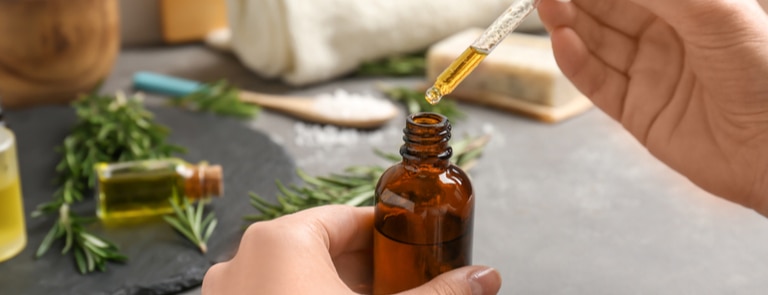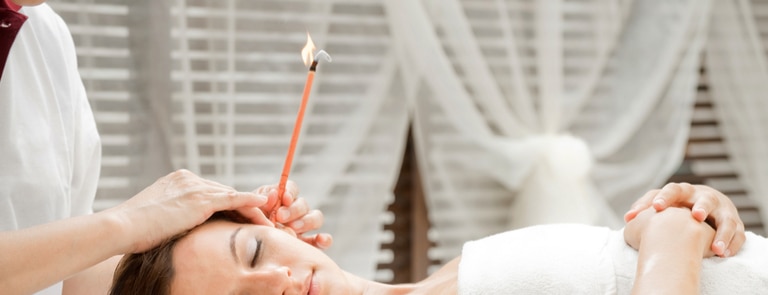15% off €35 OR 20% off €45
Too much earwax? How to remove it
.png)
Earwax is not really something we tend to think about too often, unless our ears get blocked or feel painful because we have got too much of it.
But is it something we should be more mindful of? Are there things we can do to prevent it from building up?
And are there certain things we should be avoiding that actually makes earwax more of a problem?
Keep reading for the answers to these questions and more.
First things first, what is earwax?
Earwax (scientifically known as cerumen) is produced by the cells in the ears to help provide an extra layer of protection from infection.
It also helps prevent damage to the skin in both the ears’ canals and eardrums.1
Essentially, wax is the ears’ equivalent of ‘sleep’ that you might get in your eyes overnight or the mucus you get in your nose to clear it of dust and unwanted bacteria.
Earwax helps to trap dust, dead cells and skin, in addition to clearing the ears of potentially harmful bacteria or fungi.2
Ears are often referred to as being self-cleaning.
That’s because the skin of the ear canal grows towards the outside of the ear like a conveyor belt, slowly carrying wax and anything trapped inside it out.3
Some people may naturally produce more earwax than others, though.
Although a build-up of earwax isn’t serious, it can cause irritation if it’s not removed properly.4
Why does earwax build up?
Earwax is naturally present inside our ears, and most of the time, we never have to give it a second thought, especially as it usually tends to just fall out on its own.
However, there are times when it can build up to become more than it should, which can be uncomfortable.
Commons symptoms of ear wax build-up
Ear wax build-up can make it difficult for us to hear things properly too, particularly if both of our ears have become blocked.
You may also get earache, ear infections or your ears may feel itchy.5
Too much earwax has also been known to make people feel off balance and dizzy, it can also potentially cause tinnitus too (high pitched ringing in the ear).6
What are the most common causes of earwax build-up?
Most common causes include:7
- Your ear canals are hairy or narrow – the tubes that link the eardrum and outer ear
- You are older – as you get older, your wax can get harder and doesn’t fall out as easily as it used to
- You use hearing aids, earplugs, headphones etc. – which can push the wax further into our ear canals
- Stress and fear can also lead to increased levels of earwax – the apocrine glands that make produce sweat also produce earwax
Earwax maintenance
The good news is, you shouldn’t have to do anything to look after your earwax, as it pretty much takes care of itself.
In an ideal world, you want to leave it alone to do its own thing. Tampering with it can lead to earwax build-up issues.8
What your earwax means
Sounds like a bit of an odd statement, but it is possible for earwax to differ from person to person, as it’s shaped by factors, including our ethnicity, environment, age and diet.
For instance, wet earwax is more common in Caucasians and Africans, while dry cerumen is more common among Native Americans, Pacific Islanders and Asians.9
What is your earwax saying about you?
Believe it or not, the colour of your earwax can say a lot about you:10
- Dark brown or black earwax – tends to be older, harder wax. It’s darker because it contains more dirt and bacteria. It’s common for adults to have this type of earwax
- Dark brown earwax– tinged with red may signal a bleeding injury
- Light brown, orange or yellow earwax– is healthy and normal. Children tend to have softer, lighter coloured wax in their ears
Using oil to soften and break down the wax
There are lots of ways you can remove earwax build-up – this is one of the most common methods.11

1
Slightly warm the oil (baby, coconut, almond, mineral, olive or glycerine oil) and put it into a dropper.
2
Place a few drops into your ear.
3
Tilt your head to the side for 5 minutes so that the oil can enter your ear.
4
Keep doing this once or twice a day.
What’s the best way to deal with earwax?
Everybody’s ears, especially the ear canals, are incredibly delicate and need to be treated with care to prevent them from being damaged.
Other methods of earwax removal
If the above oil method doesn't work for you, you can also try the ear candling technique.
Wax candles for ears are also widely referred to as Hopi Candles and Hopi ear candle treatment is said to be named after the Hopi tribe in North America.
Candle ear wax removal reportedly works by the heat from the candle flame melting and loosening the earwax and creating a negative pressure that sucks the wax into the candle (which are hollow inside).
This is referred to as the ‘chimney effect’.12
Wax candles for ears
Also known as ear candling, this method involves using ear wax removal candles to essentially draw the wax from your ears.13

1
Lie on your side.
2
Place the candle in your ear canal.
3
Get someone you trust to light the opposite end.
4
Let it burn for about 15 minutes.
5
Do the same all over again with the other ear.
What you must never do if you have earwax build-up
Never poke your fingers down your ears to try and get it out or use cotton buds or other implements to scoop it out.
This will only push the wax further into your ear canal, which could potentially damage your ear canal skin or your eardrum.14
If you’ve tried to soften the wax or had a go at candle ear wax removal, and your ears are still blocked after five days, then you should most probably seek medical advice, especially if you are experiencing ear infections.15
We hope your earwax build-up doesn’t come to this, in fact, we hope it doesn’t build up at all. But if it does, we hope you now know how best to deal with it.
Last updated: 22 September 2021
- https://medlineplus.gov/ency/article/000979.htm
- https://medlineplus.gov/ency/article/000979.htm
- https://www.ncbi.nlm.nih.gov/pmc/articles/PMC4005193/
- https://www.health.harvard.edu/staying-healthy/got-an-ear-full
- https://www.nhs.uk/conditions/earwax-build-up/
- https://www.nhs.uk/conditions/earwax-build-up/
- https://www.nhs.uk/conditions/earwax-build-up/
- https://www.health.harvard.edu/blog/3-reasons-to-leave-earwax-alone-2017051711718
- https://www.healthyhearing.com/report/52679-What-you-need-to-know-about-earwax
- https://www.healthyhearing.com/report/52679-What-you-need-to-know-about-earwax
- https://www.healthline.com/health/ear-wax-removal-home-remedy#remedies
- https://www.earwaxclinic.co.uk/do-ear-candles-work/
- https://www.webmd.com/cold-and-flu/ear-infection/what-is-ear-candling#1
- https://www.noisyplanet.nidcd.nih.gov/have-you-heard/cotton-swabs-ears
- https://www.nhs.uk/conditions/earwax-build-up/



